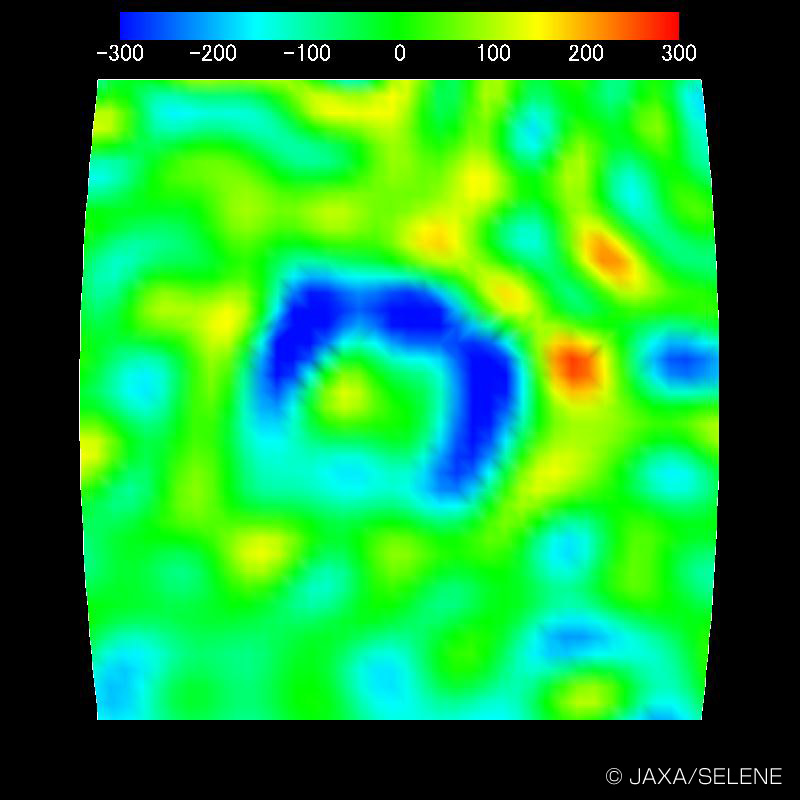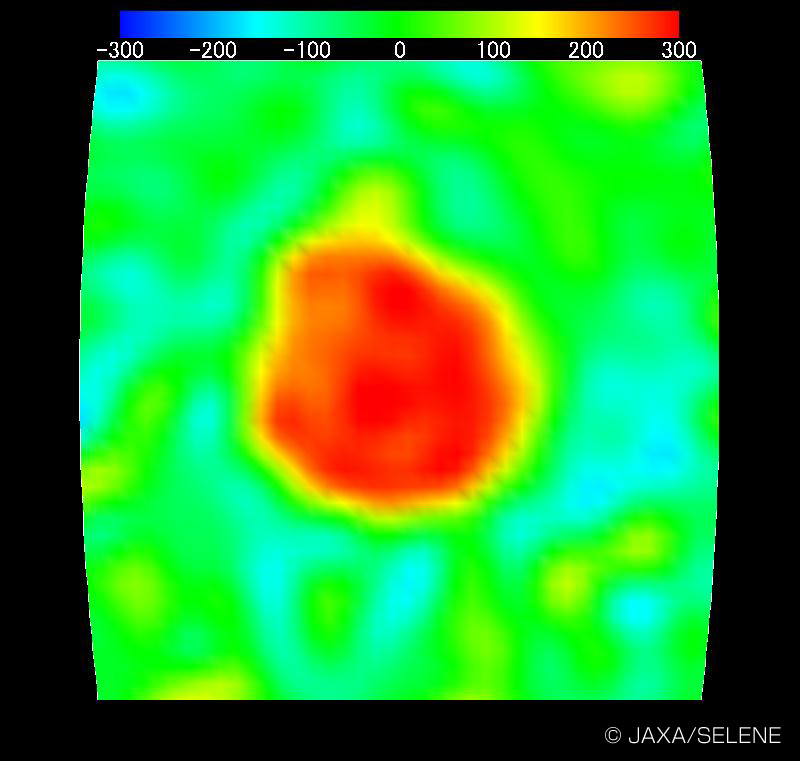·New finding in study on the Origin of Dichotomy for the Moon
http://www.jaxa.jp/press/2008/04/20080416_kaguya_e.html
April 16, 2008 (JST)
Kyushu University
National Astronomical Observatory of Japan
Japan Aerospace eXploration Agency (JAXA)

 [Left, Gravity Anomaly Map at the Apollo basin. Rigth, Gravity Anomaly Map at the Mare Serenitatis]
[Left, Gravity Anomaly Map at the Apollo basin. Rigth, Gravity Anomaly Map at the Mare Serenitatis]
JAXA announced a new finding of a gravity anomaly for both the near side and far side of the Moon by using 4-way Doppler observation data from the RSTAR (OKINA) with the main orbiter, the KAGUYA.
Until now, the gravity anomaly of the far side of the Moon has not been understood well. The gravity anomaly, which was obscure before, has been clearly revealed through observations by the Kaguya mission. For instance, the gravity anomaly of a basin on the far side is found to be characterized by a negative anomaly in a ring like the Apollo basin. On the other hand, the gravity anomaly of the basin on the near side is uniformly positive over the region such as with the Mare Serenitatis. Thus, the clear difference in gravity anomaly on the near side and the far side has been newly discovered and this fact brings a different story about the structure of the underground and the history of the evolution of the far side and near side of the Moon.
[...]
*Gravity anomaly: The lunar gravity field is not homogenous. Any region of the Moon with a higher than expected mass density will produce a gravity anomaly.
*Dichotomy of the Moon: Between the near side and the far side, clear asymmetry is called the "Dichotomy of the Moon" as in the thickness of the lunar crust and the distribution of the lunar Maria.
Read more...
Kyushu University
National Astronomical Observatory of Japan
Japan Aerospace eXploration Agency (JAXA)

 [Left, Gravity Anomaly Map at the Apollo basin. Rigth, Gravity Anomaly Map at the Mare Serenitatis]
[Left, Gravity Anomaly Map at the Apollo basin. Rigth, Gravity Anomaly Map at the Mare Serenitatis]JAXA announced a new finding of a gravity anomaly for both the near side and far side of the Moon by using 4-way Doppler observation data from the RSTAR (OKINA) with the main orbiter, the KAGUYA.
Until now, the gravity anomaly of the far side of the Moon has not been understood well. The gravity anomaly, which was obscure before, has been clearly revealed through observations by the Kaguya mission. For instance, the gravity anomaly of a basin on the far side is found to be characterized by a negative anomaly in a ring like the Apollo basin. On the other hand, the gravity anomaly of the basin on the near side is uniformly positive over the region such as with the Mare Serenitatis. Thus, the clear difference in gravity anomaly on the near side and the far side has been newly discovered and this fact brings a different story about the structure of the underground and the history of the evolution of the far side and near side of the Moon.
[...]
*Gravity anomaly: The lunar gravity field is not homogenous. Any region of the Moon with a higher than expected mass density will produce a gravity anomaly.
*Dichotomy of the Moon: Between the near side and the far side, clear asymmetry is called the "Dichotomy of the Moon" as in the thickness of the lunar crust and the distribution of the lunar Maria.






.png)





No comments:
Post a Comment